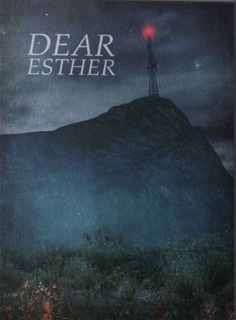An intriguing journey that will satisfy the eyes and ears
The island isn't open for free-form exploration. There are discrete paths along cliff sides or beaches. You'll proceed through luminescent caves and enter abandoned shelters. There are branching paths and you can head backwards to explore if you desire. Some dark areas require the automatic flashlight but you'll never have trouble seeing the beauty of the island. There is very little back tracking and several points of no return. Along the way, small objects scatter the landscape from those who came before you. You are walking in the footsteps of the man who is bringing the letters to life.
Intrigue is produced through the well voiced dialogue that is triggered as you move through the island. Many of these audio cues are directly related to what you see. The words are perfectly enunciated with balanced emotion. Toward the end you may be startled by some of the dialogue as it changes in tone to give urgency. The core behind this adventure is deciphering the confusing dialogue. It's a mixture of multiple different story threads. Your goal is to connect the story with the visuals that surround you
Dear Esther uses the Source engine to great effect, pushing the tech that powered Half-Life 2 to new highs. Wonderful cavernous areas, wind swept crests, haunting beaches and rusted ship wrecks are some locations you visit. The ambient audio does a great job to complement the environment. Wind circles through an enclosed path and water flows gently down a stream. Consistent textures give an earthy feel to everything. A wonderful music score helps connect it all together. Perhaps the final scene demonstrates the raw visual achievement if you haven't already noticed it.
There is no conventional gameplay in Dear Esther. This world seems the perfect fit for puzzles and interaction, but there is none. The closest in terms of mood and atmosphere would be the Penumbra games. Those games had puzzles and many interactive elements, all absent here. Instead you will walk, explore, swim and listen to dialogue for around 90 minutes. It may sound boring but the experience is far from it. The world hooks you in and compels you forward. You need to approach Dear Esther with an open mind to get the most out of it.
It's almost inevitable that you will ask yourself whether Dear Esther is really a game. Is it a form of art, an interactive story, a tech demo or a mixture of all of these things? Does it really matter? Dear Esther is a visual and auditory journey through a wonderful world. It's captivating experience that you won't soon forget. While the story may not make much sense when you finish, it won't stop you thinking about what has just transpired. It's a unique experience, one I recommend to anybody who can spare 90 minutes. The change of pace, visual accomplishment and thought provoking dialogue is worth it alone.

